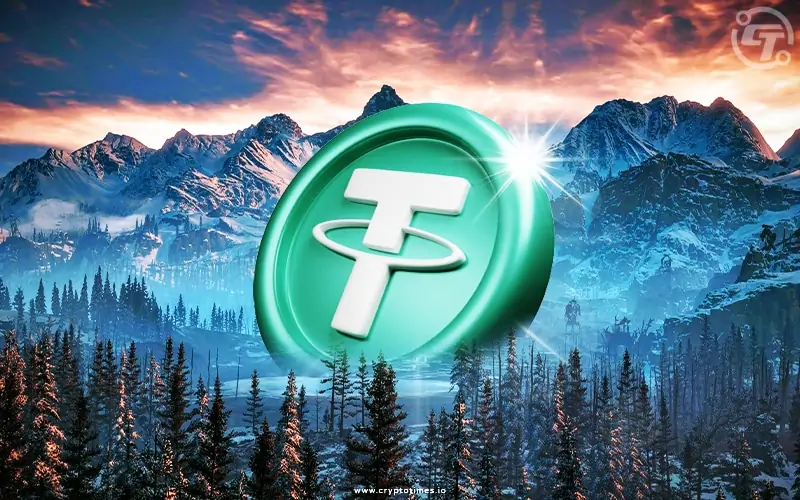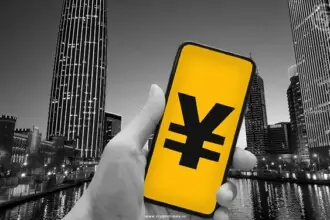The cryptocurrency markets are constantly evolving, but few could have predicted the meteoric rise of Tether (USDT) in 2023. This controversial stablecoin has experienced hockey stick-like growth in its position, cementing its position as the third-largest crypto asset behind Bitcoin and Ethereum.
Tether’s market capitalization exploded from around $60 billion to over $70 billion in 2022, despite the broader crypto downturn. It now accounts for nearly 7% of the total crypto market cap, up from just 1% in 2020.
But how did this stablecoin, pegged 1:1 to the U.S. dollar, balloon into a crypto behemoth? What’s fueling adoption in trading, DeFi, NFTs, and beyond? And does Tether have staying power despite simmering concerns?
In this in-depth analysis, we unpack the factors driving Tether’s ascent up the crypto ranks. By analyzing market share data, use cases, risks, and controversies, we evaluate the future of this prominent yet polarizing stablecoin.
What Is Tether?
Tether is a stablecoin, which is a type of cryptocurrency designed to have a stable value. While most cryptocurrencies, like Bitcoin, are very volatile, stablecoins aim to maintain a fixed price.
Tether (USDT) belongs to a category of stablecoins called fiat-collateralized stablecoins. This means each Tether token issued is supposedly backed 1:1 by real U.S. dollars held in reserves by Tether. You may think of Tether as a private currency pegged with the U.S. dollar.
Having stable purchasing power helps make Tether useful for various cryptocurrency use cases like trading, lending, payments, and more. Since its launch in 2014, Tether has grown to become one of the largest stablecoin with a multibillion dollar market capitalization.
Tether’s Historical Movement In Its Marketcap
Tether, the stablecoin, was just a glimmer in the eye of its creators back in 2014 when it was first released into the Wild West of cryptocurrency. USDT rolled about slowly at first, as adoption was sparse in those early frontier days.
Prices stayed corralled around $1, where the value was supposed to be hitched to the U.S. dollar.
After a few years, Tether got the recognition it deserved in 2017 as crypto pioneers realized the usefulness of a digital asset with price stability amidst volatile swings. Its market grew steadily as more prospectors poured into the crypto lands.
In 2021, Tether’s growth went supernova as demand for stablecoins boomed across exchanges, DeFi protocols, and shady gambling dens. The market cap swelled from just $20 billion to over $60 billion that year alone as crypto investors and traders rode the massive bull run in the crypto market.
Tether became the third largest crypto behind XRP by 2022, though it was still just grazing $1. However, last year, in 2022, the overall USDT market cap plunged after witnessing devastation in the crypto market as the market was affected by crypto winter.
Like the long road stretching across frontier lands, Tether’s ascent has seen smooth horizons and boulder-filled gullies. But with crypto adoption still low globally, Tether’s voyage seems poised to continue across many more miles, come rain or shine. Its gap with the front-running Bitcoin and Ethereum may slowly close as the stablecoin keeps a steady pace.
What Is Driving Tether’s Growth In 2023?
There are many factors contributing to the increased growth of Tether in 2023.
- Increased Stablecoin Demand: The main reason Tether has grown so much is because it helps traders avoid risk. When crypto prices go up and down a lot, Tether’s price stays steady at around $1. So traders buy Tether to protect their money from big price swings.
- DeFi and NFT adoption: Another growth driver is Tether which is used a lot in DeFi and NFTs. These new crypto sectors have grown very big over the last few years. People trading DeFi tokens or buying NFTs use Tether to complete transactions smoothly.
- Liquidity and Speed: Tether also moves faster and has more coins available than other stablecoins. So traders prefer using Tether to lock in profits quickly during volatile markets. Its huge supply makes trading efficient.
- Easy access with the traditional market: The foremost factor that brought popularity and impressive market cap to USDT is its attribute to delve with traditional market. While having no legal tender status, USDT is still used for mainstream adoption, highlighting its potential.
And as more regular people and big investors get into crypto globally, the demand for a stable place to store money rises. Tether serves this need for stability as the top stablecoin with the largest market size.
The Role and Uses of Tether in Crypto Trading and Lending
Tether bridges the crypto and fiat worlds, unlocking trading, lending, and leverage opportunities not possible using only volatile cryptocurrencies. However, Tether can be used for trading and lending purposes. Here is how:
1. Trading
As a base trading pair, Tether unlocks frictionless exchange between major cryptocurrencies like Bitcoin and Ethereum on platforms like Binance and Coinbase. Traders seamlessly swap Tether for crypto assets rather than slower wire transfers. USDT pairs also enable trading crypto-to-crypto efficiently.
When volatility strikes, traders capitalize on Tether’s stability to swiftly move positions into USDT without exiting the market completely. This allows for weathering price swings and re-entering on dips. Tether also provides fast settlement finality compared to fiat wires, facilitating rapid exchange between assets.
For margin trading, Tether extends leverage by allowing traders to borrow USDT against existing crypto holdings to make bigger bets without liquidating. Margin trading supercharges profits but also risks – USDT unlocks this while avoiding fiat complexity.
2. Lending
On DeFi platforms, Tether is widely accepted as collateral for crypto-backed loans given its reliability in maintaining a $1 value. Borrowers avoid selling actual crypto holdings as loan security by putting up USDT.
Lenders can also park idle Tether in DeFi pools to earn interest by providing liquidity to lending protocols. As Tether is blockchain-based, it offers DeFi integration and yields unavailable fiat cash.
Volatility is a chief risk in crypto borrowing. By taking loans in stable Tether, borrowers hedge against market swings. Repayments don’t fluctuate like crypto. Tether thus unlocks a stable borrowing alternative.
Arbitrageurs use Tether’s stability for low-risk profits. If Tether’s peg differs minutely across exchanges, traders quickly exploit the spread through rapid borrowing, exchange, and repayment using USDT.
Tether Controversies: Price Manipulations, Reserves and Regulations
One big controversy is that some people think Tether has been used to manipulate crypto prices. The accusation is that Tether prints new coins that are not really backed by dollars. They use these coins to buy Bitcoin and push the price up. Then they sell and make big profits. But Tether says the coins match real demand.
Another issue is doubt about Tether’s cash reserves. Tether claims every coin issued is backed 1-to-1 by real U.S. dollars held in accounts. But some experts worry Tether may not truly have as much cash as it claims. However, Tether is now planning to display its real-time reserve data to ensure its users.
There are concerns that reserves are empty and not verified. Tether has tried to prove its reserves through audits, but some doubts remain.
Finally, Tether has faced regulatory uncertainty. As a company, Tether operates globally in different countries. This makes it hard for government rules and oversight to apply to Tether’s activities. Some countries have banned Tether or crypto. Though many allow it, stronger regulations on stablecoins like Tether may emerge in the future.
While Tether maintains it acts properly, its huge size draws lots of criticism. Concerns over price manipulation, empty reserves, and loose regulation will likely continue. But Tether remains popular with crypto traders who value its stability during wild markets. The controversies may not go away soon, but Tether continues growing.
Conclusion
Tether has become very popular despite lots of criticism and legal problems. Some people say Tether manipulates crypto prices by printing new coins without dollar backing. Others worry Tether does not have enough cash reserves to redeem all the coins issued. And regulators want more control over Tether’s activities across borders.
Even with these controversies, Tether keeps growing fast because crypto traders find it useful. They use Tether to avoid risk from crypto price changes. Tether also helps enable trading, lending, and transactions.
The debates around Tether’s practices will likely continue as they get bigger. Tether says it acts properly and legally. The company tries to improve transparency through audits. But concerns persist.
In the future, stricter regulations may come for stablecoins like Tether. But Tether shows stablecoins have an important role in crypto’s fast growth. Crypto will probably keep evolving rapidly alongside Tether. Despite its problems, Tether survives as a top crypto asset.







